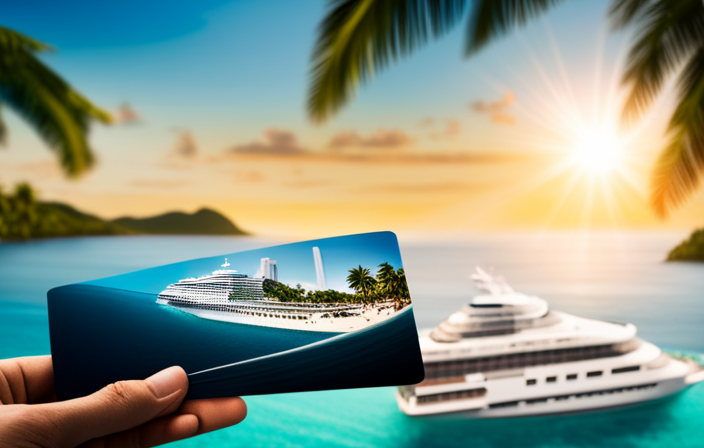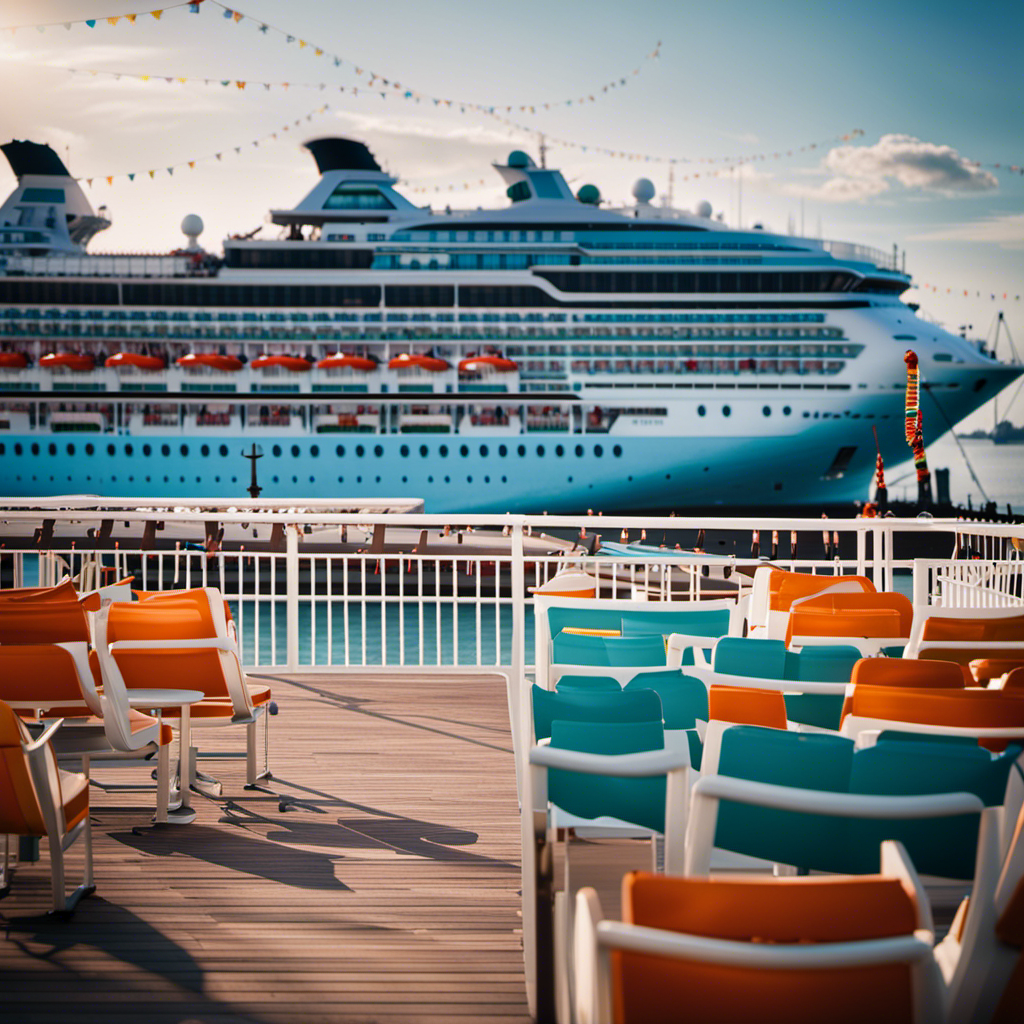Adaptive cruise control, often called smart cruise control, is a groundbreaking technology that has significantly transformed the way we drive. It serves as an assistant that constantly monitors the road ahead and adjusts your speed accordingly.
Let’s face it, driving can be monotonous, especially on long trips. But with smart cruise control, you can sit back, relax, and let the car do the work. No more constant adjustments of the speedometer, no more worrying about maintaining a safe distance from the car in front of you.
It’s like magic, but it’s actually science. In this article, we will explore the basics of smart cruise control, how it works, and the benefits it offers. We will also discuss different types of smart cruise control systems, limitations to consider, and the future of this technology.
So fasten your seatbelt and get ready to dive into the world of smart cruise control.
Key Takeaways
- Smart Cruise Control, also known as adaptive cruise control, utilizes sensors and radar systems to adjust speed and maintain a safe following distance to prevent rear-end collisions and reduce driver fatigue.
- It constantly monitors the distance to the vehicle ahead and automatically adjusts speed to maintain a safe distance, adapting to different driving conditions. However, it may have limitations in detecting sudden obstacles.
- Smart Cruise Control offers various benefits such as increased safety on the road, reduced driver fatigue, improved fuel efficiency, peace of mind, and enhanced driving experience.
- There are different types of Smart Cruise Control systems, including Adaptive Cruise Control (ACC), Cooperative Adaptive Cruise Control (CACC), and Stop-and-Go Cruise Control, each with unique features and limitations. It is important to understand these limitations and make informed decisions.
The Basics of Smart Cruise Control
Smart cruise control, also known as adaptive cruise control, is a remarkable technology that allows you to maintain a set speed while automatically adjusting your distance from the vehicle in front of you. This technology utilizes sensors and radar systems to detect the presence and speed of other vehicles on the road. By doing so, it can adjust your vehicle’s speed accordingly to maintain a safe following distance.
One of the advantages of using smart cruise control is increased safety, as it helps prevent rear-end collisions by automatically applying the brakes or reducing the speed when necessary. Additionally, it can reduce driver fatigue by taking over the task of constantly adjusting the speed.
Now, let’s dive into how smart cruise control works.
How Does Smart Cruise Control Work?
Imagine yourself effortlessly gliding down the open road, as your vehicle becomes an intuitive co-pilot, smoothly adapting to the flow of traffic and effortlessly navigating every twist and turn. But how does smart cruise control make this possible? Smart cruise control, also known as adaptive cruise control, utilizes sensors and advanced algorithms to analyze the surrounding environment and adjust the vehicle’s speed accordingly. It constantly monitors the distance to the vehicle ahead and automatically adjusts the speed to maintain a safe following distance. Additionally, it can adapt to different driving conditions, such as heavy traffic or changing speed limits. However, it is important to note that smart cruise control has its limitations. It may not be able to detect objects or pedestrians that suddenly enter its path, requiring the driver to remain attentive at all times. Despite these limitations, the benefits of smart cruise control are numerous. [Transition sentence into the subsequent section about ‘benefits of smart cruise control’]
Benefits of Smart Cruise Control
Smart cruise control, also known as adaptive cruise control, offers several benefits that enhance the driving experience.
First and foremost, it greatly increases safety on the road by automatically adjusting the vehicle’s speed to maintain a safe distance from the car ahead. This feature reduces the risk of rear-end collisions and provides peace of mind.
Additionally, smart cruise control helps to reduce driver fatigue by taking over the task of constantly adjusting the speed, allowing the driver to focus more on the road.
Lastly, this technology improves fuel efficiency by optimizing acceleration and deceleration, resulting in reduced fuel consumption.
Overall, smart cruise control is a valuable addition to any vehicle, providing increased safety, reduced driver fatigue, and improved fuel efficiency.
Increased Safety on the Road
Smart cruise control offers a higher level of safety on the road. This advanced technology provides increased reaction time and accident prevention, making your driving experience safer and more secure.
-
Smart cruise control constantly monitors the distance between your vehicle and the one in front of you. It automatically adjusts your speed to maintain a safe following distance. This feature helps prevent rear-end collisions by reducing the chances of sudden braking or tailgating.
-
The system also utilizes forward collision warning and automatic emergency braking. It can detect potential hazards ahead and apply the brakes if necessary. This immediate response significantly reduces the risk of accidents caused by human error or inattentiveness.
-
Additionally, smart cruise control assists in navigating heavy traffic or congested areas. It automatically adjusts your speed to match the flow of traffic, preventing sudden stops and starts. This creates a smoother and safer driving experience.
With smart cruise control, you can enjoy increased safety on the road. It reduces the chances of accidents and promotes a more relaxed driving experience.
Reduced Driver Fatigue
By utilizing this advanced technology, drivers can experience reduced fatigue on the road, allowing them to stay alert and focused during long journeys.
Smart cruise control systems, equipped with intelligent sensors and cameras, constantly monitor the surrounding traffic and adjust the vehicle’s speed accordingly. This feature eliminates the need for constant acceleration and deceleration, reducing driver fatigue caused by repetitive foot movements.
Additionally, the system maintains a safe distance from the vehicle ahead, automatically slowing down or speeding up to match its speed. This eliminates the stress of constantly monitoring traffic conditions and reduces the risk of rear-end collisions.
By reducing driver fatigue and improving driver alertness, smart cruise control enhances safety on the road. Moreover, it allows drivers to arrive at their destinations feeling less tired and more refreshed.
With reduced fatigue, drivers can continue their journeys with improved fuel efficiency, which will be discussed in the next section.
Improved Fuel Efficiency
Improved fuel efficiency is another significant advantage of smart cruise control. By utilizing advanced sensors and algorithms, these systems optimize vehicle speed and acceleration, resulting in reduced fuel consumption. This not only saves money but also benefits the environment by reducing emissions.
The smart cruise control system constantly monitors traffic conditions and adjusts the speed accordingly, ensuring a smooth and efficient driving experience. With improved fuel efficiency, drivers can go longer distances without refueling, making long journeys more convenient and cost-effective.
Now that we understand the positive impact smart cruise control has on fuel efficiency and emissions, let’s explore the different types of smart cruise control systems available.
Different Types of Smart Cruise Control Systems
The various types of smart cruise control systems will leave you feeling amazed by their advanced technology. These systems come with different types, each offering unique features and limitations. To better understand their differences, let’s take a look at the following table:
| Type of Smart Cruise Control | Features | Limitations |
|---|---|---|
| Adaptive Cruise Control (ACC) | Adjusts speed to maintain a safe distance from the vehicle ahead | Limited effectiveness in heavy traffic |
| Cooperative Adaptive Cruise Control (CACC) | Allows communication between vehicles to maintain a closer following distance | Requires all vehicles to be equipped with CACC |
| Stop-and-Go Cruise Control | Can bring the vehicle to a complete stop and resume motion in traffic | May not detect stationary objects in certain situations |
These systems provide a range of capabilities, but it’s important to consider their limitations and make informed decisions. Understanding the different types of smart cruise control systems sets the stage for exploring the limitations and considerations for these advanced technologies.
Limitations and Considerations for Smart Cruise Control
When using these advanced technologies, it’s important for you to be aware of the limitations and considerations.
Smart cruise control systems, while impressive in their ability to maintain a set speed and distance from the vehicle ahead, have certain limitations that should be taken into account.
One limitation is their reliance on sensors, which can be affected by adverse weather conditions such as heavy rain or snow.
Additionally, smart cruise control may not be able to detect stationary objects or pedestrians, so it’s crucial to remain attentive and ready to intervene if necessary.
Considerations also include the fact that smart cruise control is designed for use on highways and open roads, and may not function optimally in urban or congested environments.
Understanding these limitations and considerations will help you make the most of this technology.
Transitioning into the subsequent section about ‘tips for using smart cruise control effectively’, it’s important to keep these factors in mind to ensure a safe and efficient driving experience.
Tips for Using Smart Cruise Control Effectively
When using smart cruise control, it’s important to set a safe following distance to ensure a proper reaction time in case of sudden stops or obstacles.
By monitoring the road ahead, you can anticipate any potential hazards and adjust your driving accordingly.
It’s crucial to always be prepared to take over control of the vehicle, as smart cruise control is not a substitute for attentive driving.
Setting a Safe Following Distance
To ensure a safe following distance, you’ve got to adjust the settings of your smart cruise control. By setting the appropriate distance between your vehicle and the one in front of you, you can minimize the risk of accidents and maintain safe driving conditions. Smart cruise control offers different options for following distance, allowing you to choose the distance that best suits your preferences and the current road conditions.
To help you understand the importance of maintaining a safe following distance, take a look at the following table:
| Following Distance | Recommended Speed Range |
|---|---|
| Short | Low speed |
| Medium | Medium speed |
| Long | High speed |
By setting the smart cruise control to the appropriate following distance, you can effectively ensure the safety of yourself and others on the road. Monitoring the road ahead is the next crucial step in utilizing smart cruise control effectively.
Monitoring the Road Ahead
Monitoring the road ahead is crucial for the safe and effective use of advanced driving assistance features. Smart cruise control, also known as driver assistance, uses adaptive technology to monitor the road and maintain a safe distance from the vehicle in front. The system continuously scans the road, detecting changes in traffic patterns or obstacles and adjusting the speed accordingly. This technology combines sensors, cameras, and radar to gather information about the surrounding environment. It analyzes this data in real-time, making precise adjustments for a smooth driving experience. By staying vigilant and attentive, drivers can rely on smart cruise control to maintain a safe following distance. However, it is important to be prepared to take over control when necessary for a seamless transition between automated and manual driving.
Being Prepared to Take Over Control
Don’t worry, you’ll be completely prepared to take over the wheel if the need arises. Smart cruise control systems are designed to assist the driver, but they also prioritize driver readiness.
The technology continually monitors the road and surrounding conditions, ensuring that the driver remains alert and engaged. If the system detects any signs of driver disengagement, it prompts the driver to regain control of the vehicle.
This can be done through visual and auditory alerts, as well as haptic feedback, such as vibrating the steering wheel. By actively involving the driver, smart cruise control systems ensure that they are ready to intervene when necessary.
This driver-centric approach enhances safety and reduces the risk of accidents. Looking ahead, advancements in smart cruise control technology will continue to improve, making it an integral part of future automotive systems.
Smart Cruise Control in Future Automotive Technology
In the future of automotive technology, smart cruise control will play a crucial role in the integration with autonomous driving. This integration will allow vehicles to seamlessly transition between manual and autonomous driving modes, enhancing overall safety and convenience.
Additionally, advanced safety features such as collision avoidance systems and lane keeping assist will be further improved through the use of artificial intelligence and machine learning. These advancements will enable vehicles to better anticipate and respond to potential hazards on the road.
Integration with Autonomous Driving
The seamless integration of smart cruise control with autonomous driving technology allows for a truly immersive and effortless driving experience. This integration is made possible by advancements in autonomous vehicle technology, which enable the smart cruise control system to communicate with other autonomous systems in the vehicle.
Here are three key ways in which smart cruise control integrates with autonomous driving:
-
Cooperative Adaptive Cruise Control (CACC): This technology allows vehicles to communicate with each other, maintaining a safe distance and synchronized speeds, resulting in improved traffic flow and reduced congestion.
-
Traffic Jam Assist: By combining smart cruise control with autonomous driving capabilities, this feature enables the vehicle to automatically accelerate, brake, and steer in slow-moving traffic, reducing driver stress and enhancing safety.
-
Highway Pilot: With this feature, smart cruise control takes full control of the vehicle on highways, including lane changing and overtaking, allowing the driver to relax and enjoy the ride.
The integration of smart cruise control with autonomous driving technology is just one aspect of the future advancements in automotive technology. Moving forward, we will explore the advanced safety features that further enhance the driving experience.
Advanced Safety Features
Experience a driving revolution with the integration of advanced safety features that enhance your journey like never before.
Smart cruise control goes beyond simply maintaining a set speed on the highway. It incorporates cutting-edge technology that enables the vehicle to adjust its speed and distance based on the surrounding traffic conditions. This increased road safety is achieved through the use of sensors, cameras, and radar systems that constantly monitor the environment and react accordingly.
By automatically adapting to the flow of traffic, smart cruise control reduces the risk of accidents and improves overall traffic flow. These advanced safety features not only provide a more comfortable and stress-free driving experience, but also contribute to a safer and more efficient road network.
Transitioning into the next section, the integration of artificial intelligence and machine learning takes smart cruise control to the next level.
Artificial Intelligence and Machine Learning
By seamlessly integrating artificial intelligence and machine learning, our vehicles are empowered to constantly learn and adapt to their surroundings, revolutionizing the way we drive. Artificial intelligence applications and machine learning algorithms allow our smart cruise control systems to analyze vast amounts of data in real-time, enabling them to make intelligent decisions and adjustments on the road. These systems use advanced sensors and cameras to collect information about the vehicle’s surroundings, including the speed and distance of other vehicles, road conditions, and traffic patterns. By processing this data, the smart cruise control system can predict and respond to potential hazards, automatically adjusting the vehicle’s speed and maintaining a safe distance from other cars. This level of intelligence and adaptability enhances safety and provides a more comfortable driving experience. Moving forward, let’s explore how smart cruise control compares to traditional cruise control systems.
Comparison of Smart Cruise Control with Traditional Cruise Control
When comparing smart cruise control with traditional cruise control, several benefits stand out.
-
Improved Safety: Smart cruise control utilizes advanced sensors and artificial intelligence algorithms to detect and adapt to changing traffic conditions, reducing the risk of accidents caused by human error.
-
Enhanced Efficiency: By automatically adjusting the speed based on traffic flow, smart cruise control helps optimize fuel consumption and reduce emissions.
-
Increased Comfort: With the ability to maintain a safe distance from the vehicle in front, smart cruise control eliminates the need for constant acceleration and braking, providing a smoother and more comfortable ride.
Transitioning to the next section about common myths and misconceptions about smart cruise control, it is important to address these misconceptions to fully understand the capabilities and limitations of this technology.
Common Myths and Misconceptions about Smart Cruise Control
Now that we have compared Smart Cruise Control with Traditional Cruise Control, let’s move on to debunking common misconceptions and myths surrounding Smart Cruise Control.
There are a few misconceptions that need to be addressed in order to fully understand the capabilities and benefits of this advanced technology.
One common myth is that Smart Cruise Control is fully autonomous and can drive the car without any human intervention. This is not true. Smart Cruise Control still requires the driver to be alert and in control of the vehicle.
Another misconception is that Smart Cruise Control is only useful on highways. In reality, it can be used in various driving conditions, including stop-and-go traffic.
By debunking these myths, we can better appreciate the potential of Smart Cruise Control.
Transitioning to the next section, let’s explore the conclusion: embracing the future of driving with smart cruise control.
Conclusion: Embracing the Future of Driving with Smart Cruise Control
In conclusion, embracing the future of driving with smart cruise control offers numerous benefits. Firstly, it enhances safety by maintaining a safe distance from the car ahead, reducing the risk of rear-end collisions. Secondly, it improves fuel efficiency by optimizing acceleration and deceleration based on traffic conditions. Lastly, it reduces driver fatigue by alleviating the need for constant speed adjustments. Embracing this advanced technology means embracing a safer, more efficient, and more enjoyable driving experience.
Frequently Asked Questions
Can smart cruise control prevent all accidents?
Smart cruise control is a valuable tool in reducing accidents caused by distracted driving. While it cannot prevent all accidents, it significantly reduces the risk of rear-end collisions by automatically adjusting the vehicle’s speed and maintaining a safe distance from the car ahead.
Is smart cruise control available in all car models?
Yes, smart cruise control is available in most car models. It uses advanced sensors and radar technology to maintain a safe following distance and adjust the vehicle’s speed accordingly. The benefits of smart cruise control include increased safety and reduced driver fatigue.
How does smart cruise control adapt to different driving conditions?
Smart cruise control adapts to different driving conditions through its safety features. It adjusts the vehicle’s speed and distance to maintain a safe following distance. This feature is particularly beneficial in adverse weather conditions, improving overall safety on the road.
Can smart cruise control operate in heavy traffic?
Yes, smart cruise control can operate in heavy traffic. It uses advanced sensors and algorithms to adapt to the flow of vehicles, maintaining a safe distance and adjusting speed accordingly. It also works in rural areas and bad weather conditions.
Are there any privacy concerns with smart cruise control systems?
Privacy implications and data security are important considerations with smart cruise control systems. The collection and storage of personal driving data could potentially raise privacy concerns, and ensuring the security of this data is crucial to protect users’ information.
Can Smart Cruise Control Help Reduce Motion Sickness on a Cruise Ship?
If you’re prone to motion sickness, choosing the best room for motion sickness on a cruise ship can make a big difference. Smart cruise control can help reduce the impact of ship movement, but being in a centrally-located cabin on a lower deck is still the most effective way to minimize discomfort.
Conclusion
In conclusion, after investigating the truth behind the theory, it is clear that smart cruise control is a revolutionary advancement in automotive technology.
Its ability to adapt to changing road conditions and maintain a safe distance from other vehicles is truly remarkable.
The benefits of this system, such as increased safety and reduced driver fatigue, are undeniable.
While there are limitations and considerations to be aware of, the future of driving looks promising with the integration of smart cruise control.
It is an exciting time to be on the road.
Meet Asra, a talented and adventurous writer who infuses her passion for exploration into every word she writes. Asra’s love for storytelling and her insatiable curiosity about the world make her an invaluable asset to the Voyager Info team.
From a young age, Asra was drawn to the power of words and their ability to transport readers to far-off lands and magical realms. Her fascination with travel and cultures from around the globe fueled her desire to become a travel writer, and she set out on a journey to turn her dreams into reality.











